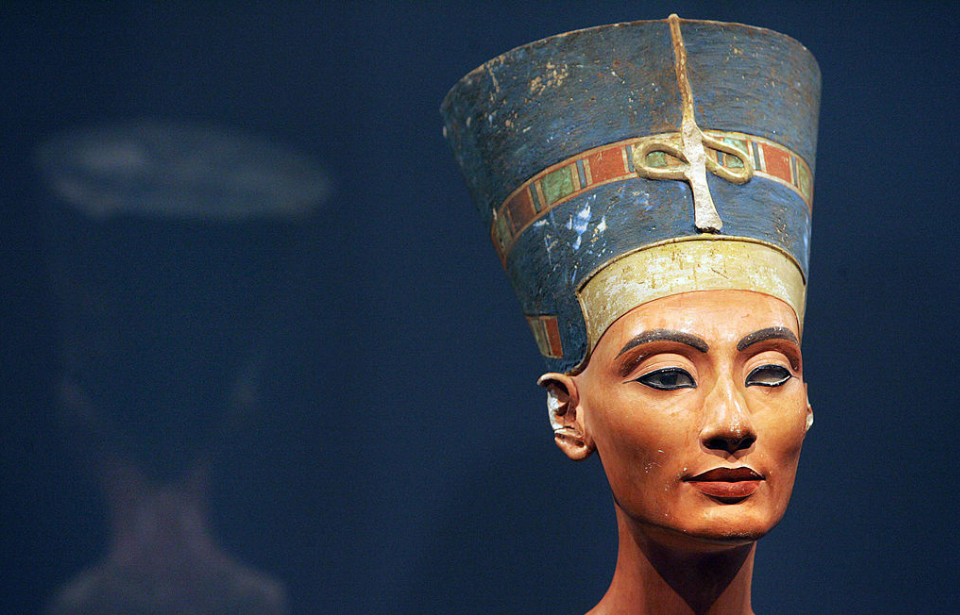King Tut and Cleopatra are arguably the best-known Ancient Egyptian rulers in today’s modern world. King Tut is known for his nearly intact, extremely luxurious tomb found in 1922, while Cleopatra is known for the immense power she held as a woman ruling Egypt and her eventual tragic death. However, there were many other female “kings” who ruled Egypt apart from Cleopatra. Here, we take a look at some of the most powerful women to have ever lived, that history has since largely forgotten.
1. Hatshepsut, reigned from 1479 to 1458 BCE
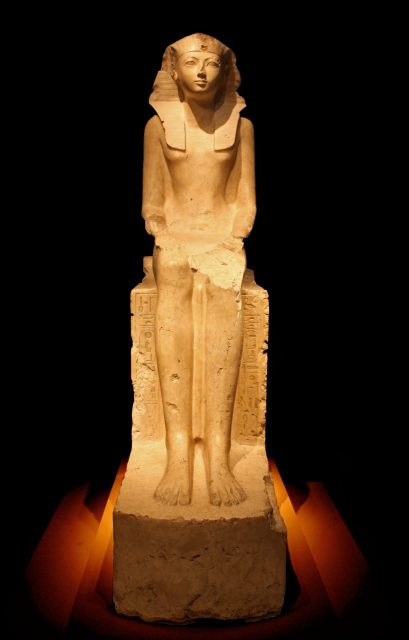
Hatshepsut had a widely successful reign as Pharaoh of Egypt, and yet she remains unknown to many people today. When Hatshepsut’s husband, Thutmose II died, the Egyptian throne was passed down to Hatshepsut’s stepson Thutmose III. However, when Thutmose III came to power, he was still much too young to rule so Hatshepsut ruled as regent. A female serving as a regent for a few years was not all that unusual. After three years of ruling as regent, Hatshepsut became a pharaoh of Egypt (technically as co-ruler with Thutmose III). Hatshepsut becoming an Egyptian Pharaoh was, in fact, much more unusual than her ruling as regent for a few years until her son came of age.
Her rule was relatively peaceful. In true Pharaoh form, statues were created of her that interestingly depicted a male king, right down to the inclusion of a beard. However, although she did visually appear as male, she was referred to as female in writing, which publicly acknowledged her female status.
Hatshepsut also launched many different building projects, including a stunning temple at Deir el-Bahari, now known as the Mortuary Temple of Hatshepsut. Interestingly enough, although Hatshepsut was given a burial in the Valley of the Kings, her memory was not honored. In fact, soon after her death all of Hatshepsut’s monuments were attacked, her statues were taken down and smashed, and images and titles depicting her were defaced. Archeologist Joyce Tyldesley has suggested that perhaps the defacing of Hatshepsut’s imagery was done by her stepson, Thutmose III, as his attempt to rewrite history to incorporate Hatshepsut’s successful reign into his own reign.
2. Khentkawes I, reign unknown
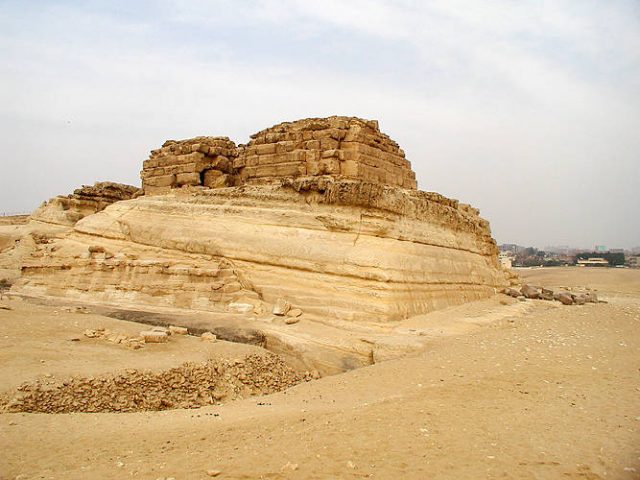
If Hatshepsut remains relatively unknown to modern history, then Knentkawes I has almost completely disappeared from any historical narrative. The status of Khentkawes I has been heavily debated by historians and archeologists. She was the daughter of King Menkaure and the wife of King Shepseskaf (who ruled c2510 to 2502 BCE). Her two sons, Sahure and Neferirkare, both went on the be Egyptian kings.
Khentawes I’s funerary complex at Giza was just as elaborate as the nearby pyramids of her male predecessors. In fact, hieroglyphic inscriptions within her funerary complex can be translated as “King of Upper and Lower Egypt, Mother of the King of Upper and Lower Egypt.” Similarly, she was depicted as a king on the walls of her tomb. She was portrayed enthroned, holding a scepter, wearing the royal Uraeus cobra at her brow, complete with a tie-on false beard of kingship. Although the jury is still out on whether or not she truly ruled Egypt, her funerary pyramid has since been dubbed the “Fourth Pyramid of Giza.”
3. Sobeknefru, reigned from 1806 to 1802 BCE
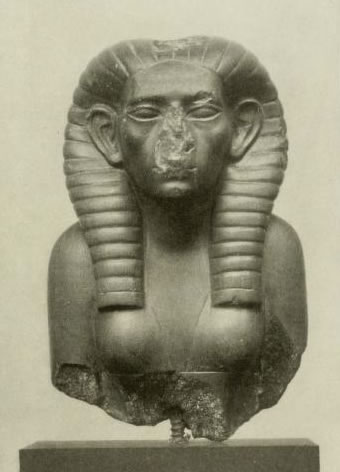
Sobeknefru is the first female king for which there is confirmed proof that she reigned as the Pharaoh of Egypt in her own right. She was the daughter of Amenemhat III, who likely died without a male heir. This resulted in Sobeknefru succeeding the Egyptian throne. Interestingly, she is named after the Egyptian crocodile god Sobek, and her name translates to “the beauty of Sobek.”
She created temples at the northern sites of Tell el-Dab’a and Herakleopolis, and completed her father’s pyramid complex at Hawara. It does seem to appear that she built her own pyramid near Dahshur but her burial site has not been identified. After her death, Sobeknefru appeared on the official king list for centuries.
4. Nefertiti, reign unknown
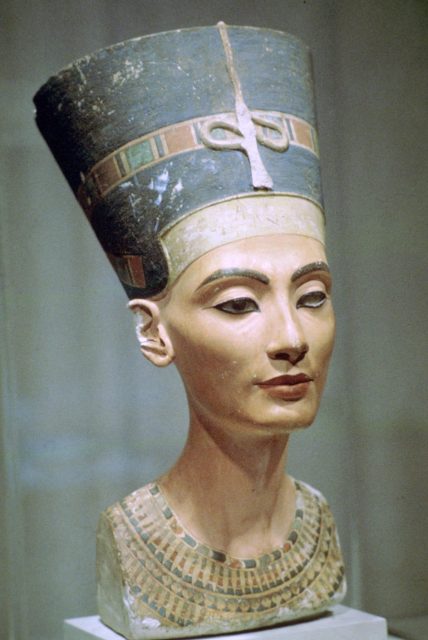
Queen Nefertiti is highly regarded as one of the most famous women of the ancient world and an icon of feminine beauty based on the famous bust of her that was found in Amarna, Egypt. She was the wife of King Akhenaten (reigned 1353 to 1336 BCE), and some scholars believe that Nefertiti and Akhenaten were co-rulers together.
Nefertiti is depicted in many images as equal in stature to King Akhenaten, which has been taken as the primary evidence for her ruling alongside her husband. However, apart from this, there is no written evidence to confirm her political status. Soon after her husband’s 12th regnal year, Nefertiti disappears from official records. It is easy to infer that she just passed away, but there is no record of her death and no record that she was buried in the royal tomb at Amarna.
Because Nefertiti disappeared from official record, some scholars have suggested that she outlived her husband and took the name Smenkhkare, and ruled alone as a sole female queen. Theories continue to circulate about Nefertiti’s later life, as her body has never been recovered.
5. Arsinoe II, reigned from 277 to 270 BCE
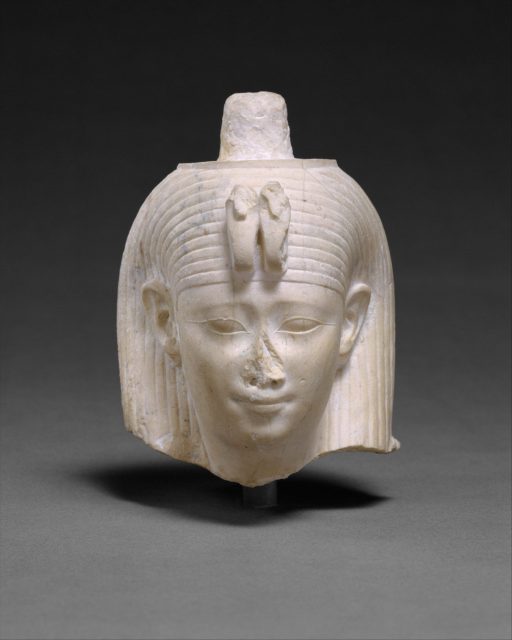
Like Cleopatra, Arsinoe II ruled Egypt as a Ptolemaic queen. She was queen of Macedonia (and Thrace) as well as King of Upper and Lower Egypt. After marrying two successive kings of Macedonia, she returned to her homeland of Egypt to court her young brother Ptolemy II (marrying family members was a normal Egyptian practice in the ancient world). After marrying Ptolemy II, Arsinoe became his full co-ruler, being privy to the same combination of names as a traditional male pharaoh.
The practice of sibling marriage was unknown to the Greeks when Arsinoe II and Ptolemy were married. The pair, however, aligned themselves with Zeus and Hera to appease the Greeks and the Egyptian brother-sister deities Isis and Osiris, who were married siblings. Arsinoe II is recorded as accompanying Ptolemy in surveying Egyptian borders during the First Syrian War. She has been depicted on coinage both alone and with her husband, wearing full royal regalia, most significantly the crown of Lower Egypt. This suggests that she was perhaps fully a pharaoh in her own right.
Numerous dedications were made to Arsinoe II in both Egypt and Greece. Her influence has often been credited with the completion of the Alexandrian Museum, which notably included the Library of Alexandria. After her death in 270 BCE, a cult to her was established in a number of different places, including the capital of Alexandria. This proved the influence she had over the Egyptian and Greek people during her reign as ruler of Egypt.
